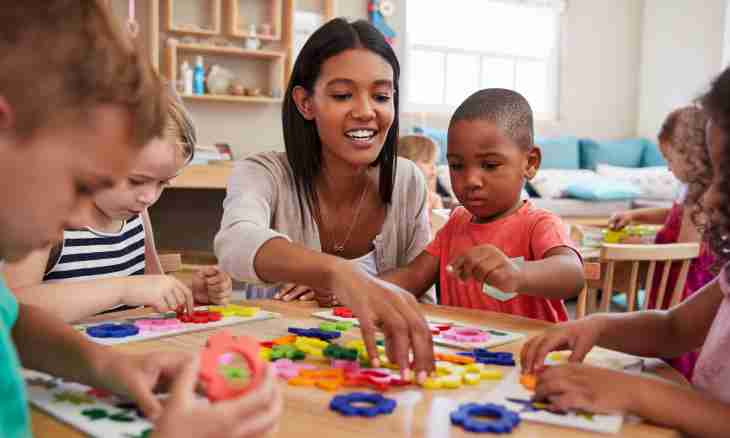At the advanced preschool age it is important to determine the level of social and psychological adaptation of the child as in the near future he will become a pupil. The school demands from the child of possession of certain skills. For example, he has to be attentive and concentrated for a long time, to keep a task in mind and step by step to carry out it, to hear and execute instructions of the adult. Besides, the kid has to be ready to communication with peers and understand rules of conduct in society. For this reason important in due time to reveal and correct violations of adaptation of the child.
The offered technique of diagnostics of social and psychological adaptation is developed taking into account age features of children of preschool age. It consists of two parts. In the first part the projective drawing "the House is used. Tree. Person". The analysis of the drawing executed by the child allows to determine the level of its consciousness. The second part consists of the questionnaire for parents and tutors. The questionnaire reveals development of the main social skills of the child, self-checking.
What will tell the drawing about "House. Tree. Person."
For performance of a task of the child ask to draw the house, a tree and the person on different sheets of paper. For drawing it is accepted to use pencils or paints.
The ability to carry out the instruction is at the same time estimated. To the child it is instructed: "On a table three leaflets and pencils lie. On the first draw the house, on the second - a tree, on the third the person. When you finish, put pencils and show me drawings." The ready drawing is estimated proceeding from key indicators - a plot, the used colors, a way of the image, extent of pressing. After execution of drawings it is necessary to learn his interpretation of images from the child. Often the child during the conversation gives information, significant for diagnostics. Uneasiness and diffidence is expressed in the drawing in a look - small figures, strong pressing, active shading, abundance of black color, image shift in a corner or aside, a large number of details. Can tell the image of the dried-up tree, flat refusal of performance of a task about the expressed problems of consciousness. The long neck at the person shows the aspiration to follow rules, big hands can speak about sociability of the child.
Use of the questionnaire
Comprehensive diagnostics of adaptation of the child is impossible without observation of it. The offered questionnaire is directed to diagnostics of features of behavior and level of formation of social skills of the child. Parents and tutors consent or disagreement with the statements given below ask to express. The offered questionnaire consists of 15 statements.1. The child easily makes contact with children on the nursery ploshchadke2. Feels freely, communicating with acquaintances vzroslymi3. Easily starts a conversation with unfamiliar lyudmi4. Adequately reacts to remarks vzroslykh5. Follows rules igry6. Keeps attention in time zanyatiya7. Carries out instructions vzroslykh8. Owns the main skills personal gigiyeny9. Seldom enters the conflicts with others detmi10. It is polite with adults and sverstnikami11. Independently copes with difficulties in rabote12. Recently changed, appeared new interesy13. The garden became uninteresting rebenku14. Stubborn defends the mneniye15. Any tasks cause big a volneniyez each affirmative answer 1 point is appropriated, the negative answer is not estimated. Over 12 points demonstrate the high level of development of social skills. Less than 6 points - low level. The qualitative analysis of the results received on both components of a technique allows to determine the level of social and psychological adaptation of the child and to reveal the available problems.

